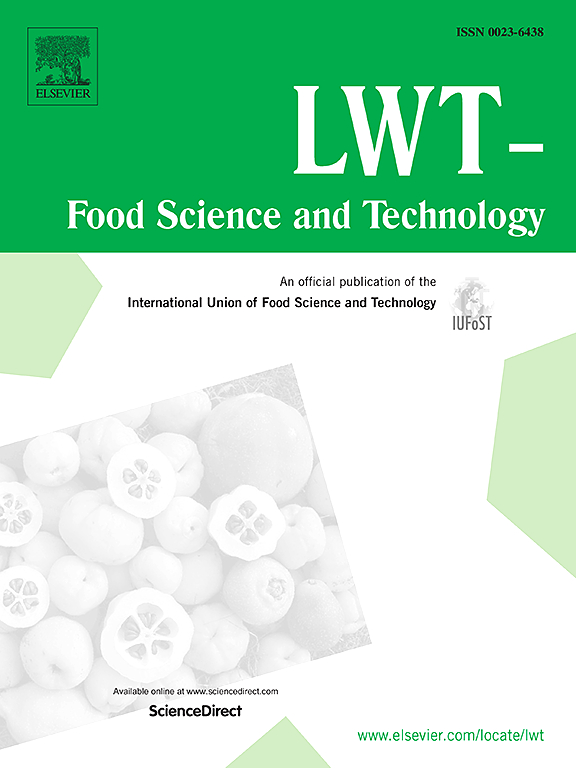脂质组学揭示了各种加工参数对烘焙咖啡油脂质组成和活性的影响
IF 6
1区 农林科学
Q1 FOOD SCIENCE & TECHNOLOGY
引用次数: 0
摘要
脂质是咖啡烘焙和萃取过程中的重要组成部分,因为在烘焙过程中脂质会赋予咖啡风味和香气。本研究从烘焙过的咖啡豆中提取咖啡油脂,并进行了乙醇萃取(EE)、超声波萃取(UE)、微波萃取(ME)和超声波-酶萃取(UME)等几种处理。从色泽、酸值、过氧化值、生育酚含量等指标来看,UME 组的油更好。通过定量脂质组学分析,对三组咖啡油的甘油脂、甘油磷脂和鞘脂进行了评估。在对鉴定出的差异脂质进行代谢途径富集时,鞘脂和甘油磷脂代谢途径显示出相当大的脂质富集。经多元回归测定,采用各种加工技术的咖啡油脂发生了很大变化;显著不同的脂质被确定为候选生物标记物。这些关于咖啡油提取和应用的新见解将使咖啡产品的生产受益匪浅。本文章由计算机程序翻译,如有差异,请以英文原文为准。
Lipidomics reveals the effects of various processing parameters on the lipid composition and activity of roasted coffee oil
Lipids are an important part of the roasting and extraction of coffee, as they impart flavor and aroma to the coffee while it is roasting. Here, coffee oil was extracted from roasted coffee beans, and several ethanol extraction (EE), ultrasound extraction (UE), microwave extraction (ME), and ultrasonic-enzyme extraction (UME) treatments were performed. The oils from the UME group were better in terms of color, acid value, peroxide value, tocopherol content, and other indicators. Glycerolipids, glycerophospholipids, and sphingolipids were evaluated in the three groups via coffee oil analysis via quantitative lipidomics. The sphingolipid and glycerophospholipid metabolic pathways showed considerable lipid enrichment when the identified differential lipids were subjected to metabolic pathway enrichment. Coffee oils subjected to various processing techniques showed substantial changes, as determined by multivariate regression; significantly different lipids were identified as candidate biomarkers. The production of coffee goods can benefit from these new insights into the extraction and application of coffee oil.
求助全文
通过发布文献求助,成功后即可免费获取论文全文。
去求助
来源期刊

LWT - Food Science and Technology
工程技术-食品科技
CiteScore
11.80
自引率
6.70%
发文量
1724
审稿时长
65 days
期刊介绍:
LWT - Food Science and Technology is an international journal that publishes innovative papers in the fields of food chemistry, biochemistry, microbiology, technology and nutrition. The work described should be innovative either in the approach or in the methods used. The significance of the results either for the science community or for the food industry must also be specified. Contributions written in English are welcomed in the form of review articles, short reviews, research papers, and research notes. Papers featuring animal trials and cell cultures are outside the scope of the journal and will not be considered for publication.
 求助内容:
求助内容: 应助结果提醒方式:
应助结果提醒方式:


